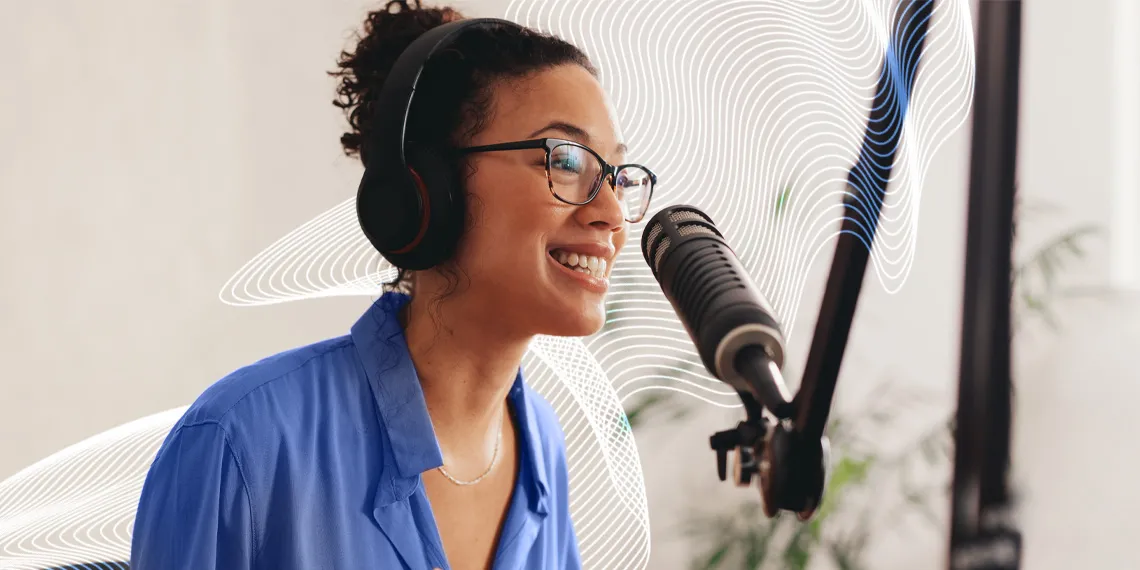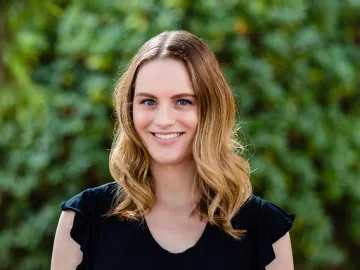Rethinking the University Lecture Experience with Podcasting
When you hear “lecture,” you likely picture a classroom full of students with an instructor talking and clicking through PowerPoint slides. In an online course, you may visualize a video of the instructor reciting their content on camera. However, “lecture” does not necessarily mean “video.” While lecture videos are often the go-to for instructors, podcasts can be an equally effective way to share information. Podcasting may be the preferred medium to dive deeply into your content.

Example
Lecture videos work best when they are short (5-10 minutes), topic-centric, and visually necessary. Alternatively, podcasts are best for digging into niche topics, interviewing or speaking with guests, and/or sharing music or sound bites in long form (no more than 30-40 minutes).
Tyina Steptoe, Associate Professor of History, created three podcasts for HIST 440 United States 1945 to Present to complement her primary materials (short lecture videos and readings):
- Politics of Soul (12:46 minutes) - Tyina explores in detail how soul music connects to the Civil Rights Movement, the Black Power Movement, and racial politics in Black American and Latino communities. Portions of songs and speeches are piped in so that students are immersed in audio that reflected the culture and events of the 1960s-1970s.
- Rap is Black America’s CNN (19:17 minutes) - Tyina uses rap music from the 1980s and 1990s to highlight social and political issues in the urban United States. Portions of music are edited into this podcast as well.
- Interview with Harrison Apple (36:35 minutes) - Tyina interviews Harrison Apple, a Ph.D. student in Gender and Women’s Studies. The interview covers a range of topics, including researching and maintaining archival records of LGBTQ+ historical events in Pittsburgh.
Podcasting can also be a fun way for students to complete assignments. For the HIST 440 final project, students were asked to complete research on any topic that related to the history of the United Since 1945 and produce an 8-10 minute podcast, VoiceThread, or video presentation. Note that if you ask students to produce a podcast, you may consider a similar 8-10 minute time limit so you are not overwhelmed when grading the whole class.
Instructions
Professor Steptoe worked with an instructional designer and the studio team from the UCATT office. She recorded in the audio/podcast studio, and the studio team produced the audio files.
You do not need to work with UCATT in order to create a podcast for your course. You can reserve a spot and record in the Media Recording Studio in the Main Library on campus. Or, you can create your podcast using Adobe Audition, a free and comprehensive app that allows you to record and edit audio. Some basic equipment, such as a microphone and headphones, can also go a long way in creating a high-quality podcast on your own.
To keep your students engaged, consider incorporating music, sound bites, or other sound effects. You can also include interviews with other experts in your field or with your students to provide different perspectives on the material.
Aside from the technical aspects of recording, pre-planning (like you would do for any kind of lecture) is key. Creating an outline, script, and/or interview questions if you have a guest for the episode will help you stay on track and keep it at a reasonable length of time.
Plan to keep your podcast time to no more than 30-40 minutes. Podcasts can go longer than typical lecture videos because students don’t need to focus on a screen. One of the main benefits of podcasting is that it allows students to access course material on their own time from anywhere. Students can listen to the podcast lectures while commuting, exercising, walking their dog, etc.; therefore, 30-40 minutes aligns well with multitasking activities.
Notes from the Expert
Other things to note
- If you are creating your own podcasts, you may need to invest in some equipment to enhance the quality, such as a microphone and headphones.
- You will need to record in a quiet location. A private office or even a clothes closet could work well to dampen outside noise.
- Ensure that you abide by Fair Use Guidelines if you will be adding in copyrighted music or audio clips.
Potential Limitations
- If you are new to using Adobe Audition, there is a learning curve to figure out how to use the software and edit your audio. Be sure to watch the tutorials and workshops to help you get started. If you need additional support, schedule a consultation with an Adobe Support Specialist.


